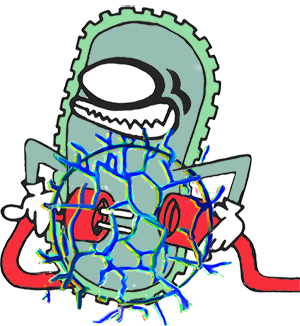Team:TU Delft-Leiden/Modeling
From 2014.igem.org
| Line 21: | Line 21: | ||
<ul> | <ul> | ||
| - | |||
| - | |||
| - | |||
| - | |||
| - | |||
| - | |||
<li> | <li> | ||
Revision as of 20:46, 9 October 2014
Modeling Overview
We modeled all three different modules our project consists of, namely the landmine module, the Extracellular Electron Transport (EET) module and the conductive curli module. In order to achieve this, we had to use all kinds of different modeling methods.
Landmine module
An important part of our iGEM project is a promoter sensitive to DNT/TNT. We will use two promoters that are sensitive to DNT/TNT, namely ybiJ and ybiFB2A1, in our project. Of these promoters, not much is known other than the fact that they have a DNT/TNT-dependent response curve . Our goal was to find a model which would be able to reproduce the response curves of both promoters. To achieve this, we constructed two different models, both using deterministic modeling methods. One model is based on a simple binding model of DNT to the promoter, the other is based on cooperative binding of DNT to the promoter. When based on the simple binding model, fits of promoter activation with respect to DNT concentration to the experimental data of [1] did not yield good results. However, when the fits were based on the cooperative binding model, we were able to match the experimental data in [1] really well, see figure 1.

EET Module
References
[1] S. Yagur-Kroll, S. Belkin et al., “Escherichia Coli bioreporters for the detection of 2,4-dinitrotoluene and 2,4,6-trinitrotoluene”, Appl. Microbiol. Biotechnol. 98, 885-895, 2014.
 "
"






